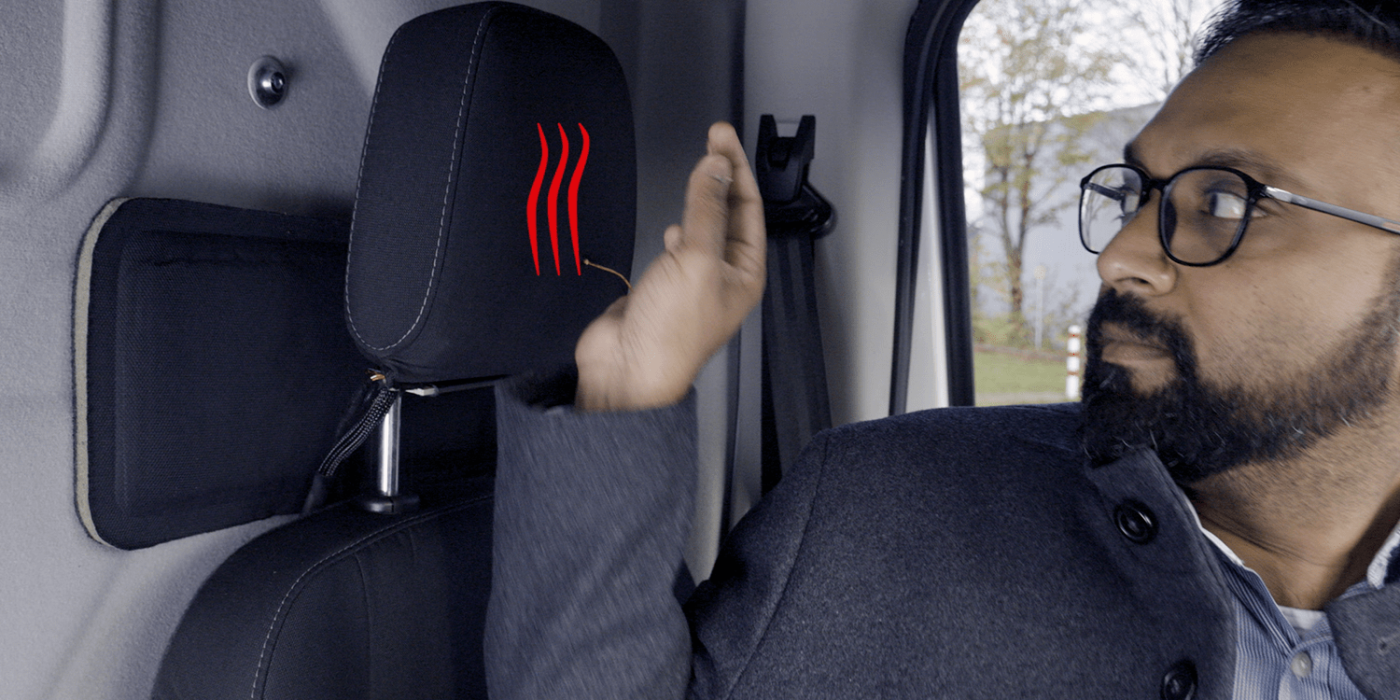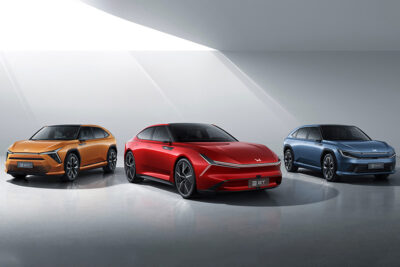Ford test proves efficiency of surface heaters in BEVs
As part of the EU project CEVOLVER (Connected Electric Vehicle Optimised for Life, Value, Efficiency and Range), Ford engineers have shown that heating surfaces can reduce energy consumption in the interior of an electric vehicle by 13 per cent. The test was conducted in an electric delivery vehicle.
Thus, the range in cold weather conditions could be increased by five per cent compared to a conventional heater fan, as Ford writes in a statement. As part of the project, engineers equipped an E-Transit with heated armrests, floor mats, door panels, sun visors and a heated steering wheel for practical tests.
The testers had to open and close the vehicle doors hundreds of times, realistically simulating the typical working day of a courier driver and tradesman, Ford says. Air heated by an electric heater fan is easily lost when the vehicle’s doors or windows are opened. The cold air that flows in must first be reheated, which costs energy. The heated surfaces, however, come into direct contact with the passengers and can thus deliver their heat without detours, which is not only more efficient in theory, but also in practice, according to Ford’s results.
The test area was mainly roads in and around Cologne and took place in winter and summer, on dry and wet roads as well as in heavy rain and wind. The test included the operational profiles ‘parcel deliveries’, ‘general cargo deliveries’ and a one-day ‘tradesman job’ 350 kilometres away.
“We all know that if the doors or windows are opened when it is colder outside, the temperature inside a vehicle drops. This is especially true for delivery vans as drivers make frequent drop‑offs and the heat generated via aircon is lost more quickly, while heated surfaces stay warm,” says Markus Espig, Systems Engineer, Propulsion Systems Engineering, Ford Research and Innovation Centre Europe. “Reducing energy use not only improves range, it also cuts costs and helps ensure that the way we travel is more sustainable.”
Since heating the interior air is very inefficient, especially on short journeys (such as commuting), contact heaters such as heated seats and heated steering wheels are usually the more efficient way to maintain a sufficient feeling of warmth – accordingly, these two contact heaters are widely used in electric cars. Heated armrests, floor mats or door panels, on the other hand, are not yet common – only some luxury models have heated armrests. Earlier this year, the automotive supplier ZF made headlines when the company announced a heated seat belt.






0 Comments